Lenovo 2016 Annual Report Download - page 187
Download and view the complete annual report
Please find page 187 of the 2016 Lenovo annual report below. You can navigate through the pages in the report by either clicking on the pages listed below, or by using the keyword search tool below to find specific information within the annual report.-
 1
1 -
 2
2 -
 3
3 -
 4
4 -
 5
5 -
 6
6 -
 7
7 -
 8
8 -
 9
9 -
 10
10 -
 11
11 -
 12
12 -
 13
13 -
 14
14 -
 15
15 -
 16
16 -
 17
17 -
 18
18 -
 19
19 -
 20
20 -
 21
21 -
 22
22 -
 23
23 -
 24
24 -
 25
25 -
 26
26 -
 27
27 -
 28
28 -
 29
29 -
 30
30 -
 31
31 -
 32
32 -
 33
33 -
 34
34 -
 35
35 -
 36
36 -
 37
37 -
 38
38 -
 39
39 -
 40
40 -
 41
41 -
 42
42 -
 43
43 -
 44
44 -
 45
45 -
 46
46 -
 47
47 -
 48
48 -
 49
49 -
 50
50 -
 51
51 -
 52
52 -
 53
53 -
 54
54 -
 55
55 -
 56
56 -
 57
57 -
 58
58 -
 59
59 -
 60
60 -
 61
61 -
 62
62 -
 63
63 -
 64
64 -
 65
65 -
 66
66 -
 67
67 -
 68
68 -
 69
69 -
 70
70 -
 71
71 -
 72
72 -
 73
73 -
 74
74 -
 75
75 -
 76
76 -
 77
77 -
 78
78 -
 79
79 -
 80
80 -
 81
81 -
 82
82 -
 83
83 -
 84
84 -
 85
85 -
 86
86 -
 87
87 -
 88
88 -
 89
89 -
 90
90 -
 91
91 -
 92
92 -
 93
93 -
 94
94 -
 95
95 -
 96
96 -
 97
97 -
 98
98 -
 99
99 -
 100
100 -
 101
101 -
 102
102 -
 103
103 -
 104
104 -
 105
105 -
 106
106 -
 107
107 -
 108
108 -
 109
109 -
 110
110 -
 111
111 -
 112
112 -
 113
113 -
 114
114 -
 115
115 -
 116
116 -
 117
117 -
 118
118 -
 119
119 -
 120
120 -
 121
121 -
 122
122 -
 123
123 -
 124
124 -
 125
125 -
 126
126 -
 127
127 -
 128
128 -
 129
129 -
 130
130 -
 131
131 -
 132
132 -
 133
133 -
 134
134 -
 135
135 -
 136
136 -
 137
137 -
 138
138 -
 139
139 -
 140
140 -
 141
141 -
 142
142 -
 143
143 -
 144
144 -
 145
145 -
 146
146 -
 147
147 -
 148
148 -
 149
149 -
 150
150 -
 151
151 -
 152
152 -
 153
153 -
 154
154 -
 155
155 -
 156
156 -
 157
157 -
 158
158 -
 159
159 -
 160
160 -
 161
161 -
 162
162 -
 163
163 -
 164
164 -
 165
165 -
 166
166 -
 167
167 -
 168
168 -
 169
169 -
 170
170 -
 171
171 -
 172
172 -
 173
173 -
 174
174 -
 175
175 -
 176
176 -
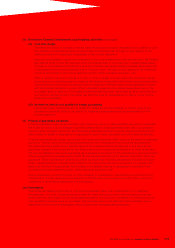 177
177 -
 178
178 -
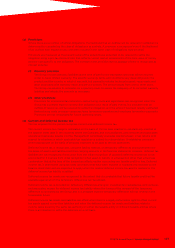 179
179 -
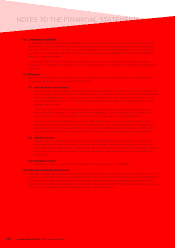 180
180 -
 181
181 -
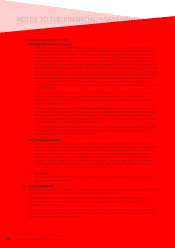 182
182 -
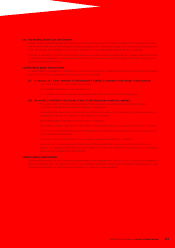 183
183 -
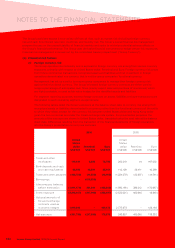 184
184 -
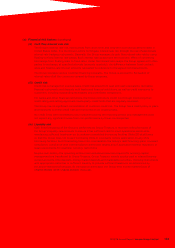 185
185 -
 186
186 -
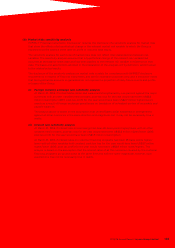 187
187 -
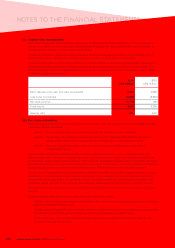 188
188 -
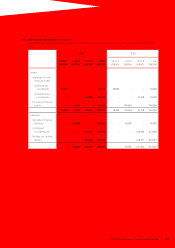 189
189 -
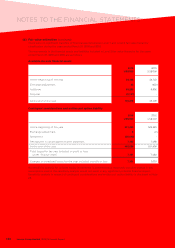 190
190 -
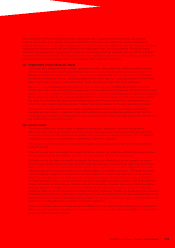 191
191 -
 192
192 -
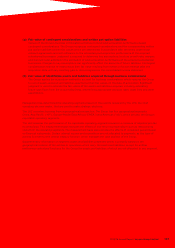 193
193 -
 194
194 -
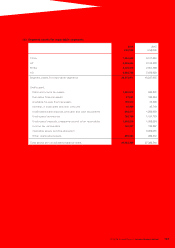 195
195 -
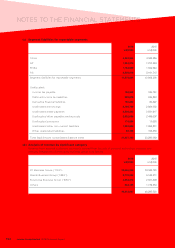 196
196 -
 197
197 -
 198
198 -
 199
199 -
 200
200 -
 201
201 -
 202
202 -
 203
203 -
 204
204 -
 205
205 -
 206
206 -
 207
207 -
 208
208 -
 209
209 -
 210
210 -
 211
211 -
 212
212 -
 213
213 -
 214
214 -
 215
215 -
 216
216 -
 217
217 -
 218
218 -
 219
219 -
 220
220 -
 221
221 -
 222
222 -
 223
223 -
 224
224 -
 225
225 -
 226
226 -
 227
227 -
 228
228 -
 229
229 -
 230
230 -
 231
231 -
 232
232 -
 233
233 -
 234
234 -
 235
235 -
 236
236 -
 237
237 -
 238
238 -
 239
239 -
 240
240 -
 241
241 -
 242
242 -
 243
243 -
 244
244 -
 245
245 -
 246
246 -
 247
247
 |
 |

185
2015/16 Annual Report Lenovo Group Limited
3 FINANCIAL RISK MANAGEMENT (continued)
(b) Market risks sensitivity analysis
HKFRS 7 “Financial instruments: Disclosures” requires the disclosure of a sensitivity analysis for market risks
that show the effects of a hypothetical change in the relevant market risk variable to which the Group is
exposed to at the balance sheet date on profit or loss and total equity.
The sensitivity analysis for each type of market risks does not reflect inter-dependencies between risk
variables. The sensitivity analysis assumes that a hypothetical change of the relevant risk variable had
occurred at the balance sheet date and had been applied to the relevant risk variable in existence on that
date. The bases and assumptions adopted in the preparation of the analyses will by definition, seldom equal
to the related actual results.
The disclosure of the sensitivity analysis on market risks is solely for compliance with HKFRS 7 disclosure
requirements in respect of financial instruments, and are for illustration purposes only; and it should be noted
that the hypothetical amounts so generated do not represent a projection of likely future events and profits
or losses of the Group.
(i) Foreign currency exchange rate sensitivity analysis
At March 31, 2016, if United States dollar had weakened/strengthened by one percent against the major
currencies with all other variables held constant, post-tax loss for the year would have been US$2.2
million lower/higher (2015: post-tax profit for the year would have been US$2.7 million higher/lower),
mainly as a result of foreign exchange gains/losses on translation of unhedged portion of receivable and
payable balances.
The analysis above is based on the assumption that United States dollar weakened or strengthened
against all other currencies in the same direction and magnitude, but it may not be necessarily true in
reality.
(ii) Interest rate sensitivity analysis
At March 31, 2016, if interest rate on borrowings had been 25 basis points higher/lower with all other
variables held constant, post-tax loss for the year would have been US$3.2 million higher/lower (2015:
post tax profit for the year would have been US$1.5 million lower/higher).
At March 31, 2016, if interest rates on customer financing programs had been 25 basis points higher/
lower with all other variables held constant, post-tax loss for the year would have been US$3.7 million
higher/lower (2015: post tax profit for the year would have been US$2.8 million lower/higher). This
analysis is based on the assumption that the interest rates of all the currencies covered by the customer
financing programs go up and down at the same time and with the same magnitude; however, such
assumptions may not be necessarily true in reality.
